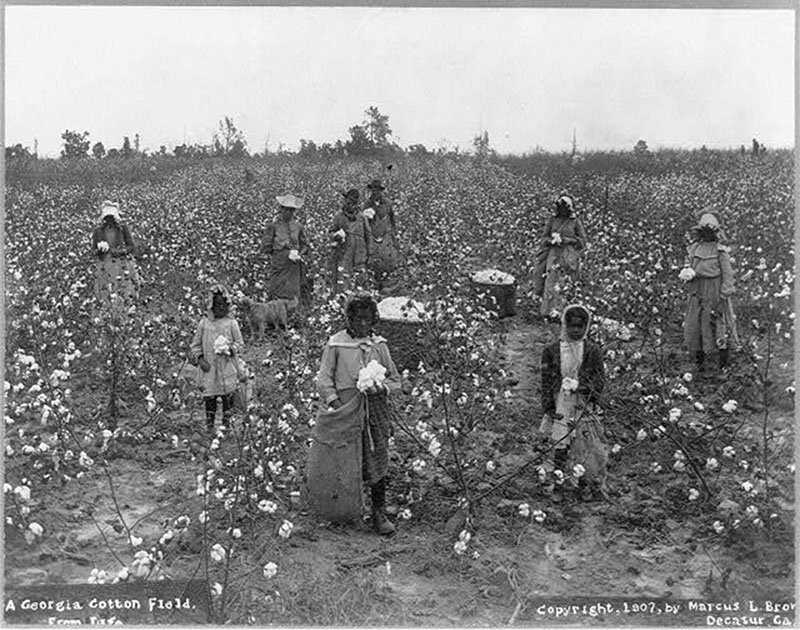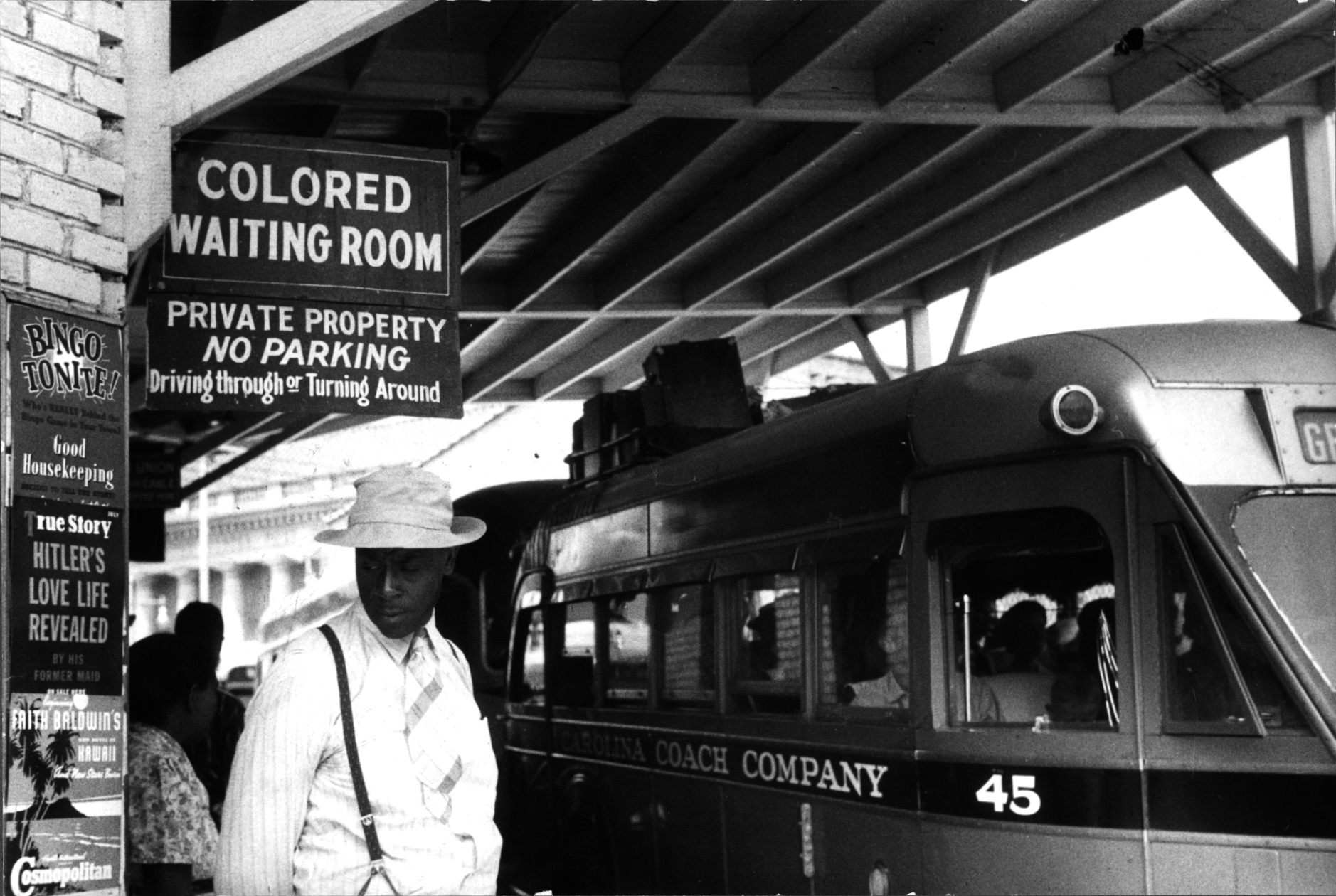Dalia Savy
Caleb Lagerwey
Robby May
AP US History 🇺🇸
454 resourcesSee Units
Reconstruction Loopholes
Despite the promises of Reconstruction, there were setbacks and constant resistance from down South. For example, all the Reconstruction Amendments had loopholes.
Convict Leasing and Sharecropping
The 13th Amendment abolished slavery and involuntary servitude. However, convict leasing and sharecropping were two practices that followed this amendment and the abolition of slavery.
- Convict leasing was a system in which state and local governments would lease out prisoners to private businesses and individuals, who would then use the prisoners as a source of labor. Black people convicted of crimes had to basically work for companies, for free, in terrible conditions.
- Sharecropping was a system in which a landowner would allow a tenant to farm their land in exchange for a share of the crop. This system was a new form of coerced labor in the South and was used to keep Black people tied to the land after the abolition of slavery.
- Blacks worked in families on a piece of land for a fixed share of the crop, usually 1/2. This was good for the landowners because it didn’t require much expenditure in advance of the harvest.
- The tenant also shared the risk of crop failure or a fall in cotton prices. Croppers had to live on credit until their cotton was sold, and plantation owners used the chance to provision them at high prices.
- Creditors were entitled to deduct what was owed to them out of the tenants' share of the crop, and this left most Croppers with no net profit at the end of the year….often with a debt that had to be worked off. Sharecropping was often considered slavery by another name.

Image Courtesy of PBS
Black Codes and Jim Crow Laws
The 14th Amendment granted Black people citizenship and equal protection under the laws. However, there were loopholes here as well.
- Black Codes were laws passed to control the movement and behavior of newly freed Black people and to restrict their rights to property, work, and legal representation. The Black Codes also criminalized many activities, such as vagrancy, that were used to arrest and detain African Americans and force them into involuntary labor.
- This was one of the worst Black Codes: the Vagrancy Laws. These criminalized homelessness and unemployment and worked directly with convict leasing. Many freed Black people were forced to work for their former owners again.
- After 1877, the Jim Crow Laws were set in place. These laws only applied to Black people and thus segregated them despite allegedly being equal. The name Jim Crow came from an antebellum minstrel show figure first popularized by Thomas “Daddy” Rice who blackened his face and sang a song called “Jump Jim Crow.”
- These laws mandated racial segregation in public spaces and institutions, such as schools, public transportation, and public accommodations.
- They also restricted the rights, opportunities, and freedoms of Black people (such as equal access to public infrastructure and voting).
- The "separate but equal" doctrine established by the Supreme Court case Plessy v. Ferguson was used to justify and legitimize this system of racial segregation and discrimination that existed throughout the Southern United States.

Image Courtesy of Howard University School of Law Library
- The Supreme Court further undermined the 14th Amendment in the Slaughterhouse Cases and the Cruikshank case which made this Amendment impossible to enforce.
- The Slaughterhouse Cases, officially known as Munn v. Illinois, dealt with the interpretation of the 14th Amendment. It basically said that 14th Amendment rights only applied to federal citizenship, not state citizenship.
- The Cruikshank case, officially known as United States v. Cruikshank, dealt with the prosecution of white supremacist individuals who were charged with violating the civil rights of African Americans during the Colfax Massacre of 1873 in Louisiana. We'll discuss this Massacre in the next section, but it basically ruled that the federal government did not have the authority to prosecute individuals for violating the civil rights of Black people. In other words, the protection of civil rights was primarily the responsibility of the states.
Poll Taxes, Literacy Tests, and Grandfather Clauses
The 15th Amendment granted Black men voting rights, but there were so many ways created to prevent them from actually voting.
- African Americans in the South were subject to violence and intimidation, including lynching and shootings, in order to prevent them from exercising their right to vote and from holding political power. This type of violence was often carried out by white supremacist groups such as the Ku Klux Klan (KKK) and other similar organizations, as well as by individual white supremacists.
- One notable example of this type of violence is the Colfax Massacre of 1873, in which a white supremacist group killed at least 150 African American men in Colfax, Louisiana, after a disputed election. This event is considered one of the worst acts of racial violence in the United States.
- Because of the Jim Crow Laws, Black people were disenfranchised through poll taxes, literacy tests, and grandfather clauses.
- Poll taxes were a voting restriction that created a fee individuals were required to pay in order to vote. They were often used in conjunction with literacy tests.
- Literacy tests were a type of voting restriction that was used in the Southern United States during the Jim Crow era. These tests were designed to be difficult and subjective, and they were administered at the discretion of white election officials. As a result, many African Americans were denied the right to vote even if they were literate.
- The grandfather clause was a loophole in some of the state's literacy test laws that allowed people who were unable to pass the test to vote if their grandfathers were eligible to vote before the Civil War. This exemption was used to allow white people to vote, while effectively denying the right to vote to African Americans, even if they were literate.
Scalawags and Carpetbaggers
Scalawags and Carpetbaggers were terms used to describe certain groups of people during the Reconstruction era in the United States, following the Civil War. More specifically, Democratic opponents gave these nicknames to their Republican rivals.
They called Southern Republicans “scalawags” and Northern newcomers “carpetbaggers”. For more information...
- Scalawags were white Southerners who supported the Republican Party and the Reconstruction efforts to rebuild the South and provide civil rights for African Americans. They were often viewed as traitors by other white Southerners, who saw them as collaborating with the "enemy" (the North) and seeking political power and economic gain at the expense of the South.
- Carpetbaggers were Northern businessmen and politicians who moved to the South during the Reconstruction era to take advantage of the economic opportunities that were created by the rebuilding of the region. They were often viewed as opportunistic outsiders who were exploiting the South for their own gain.
These two terms are considered derogatory.
Grant’s Presidency and Scandal

Image Courtesy of Wikimedia
The postwar years were notorious for the corrupt schemes devised by business bosses and political bosses to enrich themselves at the public’s expense.
- Wall Street financiers Jay Gould and James Fisk obtained the help of President Grant’s brother-in-law in a scheme to corner the gold market.
- In the Credit Mobilier affair, insiders gave stock to influential members of Congress to avoid investigation of the profits they were making, as high as 348% from government subsidies for building the transcontinental railroad.
- In the case of the Whiskey Ring, federal revenue agents conspired with the liquor industry to defraud the government of millions in taxes.
- Grant’s secretary of war was impeached by the House after an investigation revealed he had taken bribes for selling Indian trading posts.
Reconstruction Ends
Even after Ulysses S. Grant’s presidency (1869-1877) and the elimination of the KKK by 1871 because of the Enforcement Acts, Reconstruction would eventually fail. This was because the South resisted it and the North got sick of having to enforce it and protect Black rights for so long in the face of resistance.
Reconstruction ended in 1877 with the Compromise of 1877. This was a deal in which the Northern Republicans got Rutherford B. Hayes elected as president. In exchange, the Southern Democrats got an end to the military occupation of the South (called the Bayonet Rule) since they promised to respect Black rights. That...did not go so well.
Despite the enormous potential of achieving basic racial equality, the Amendments in the Constitution would be mostly useless for African Americans for almost 100 years…
The New South
Proponents of the New South envisioned a post-Reconstruction Southern economy modeled on the North’s embrace of the Industrial Revolution. An Atlanta, Georgia newspaper coined the phrase "New South” in 1874. The writer urged the South to abandon its longstanding agrarian economy for a modern economy grounded in factories, mines, and mills.
Browse Study Guides By Unit
🌽Unit 1 – Interactions North America, 1491-1607
🦃Unit 2 – Colonial Society, 1607-1754
🔫Unit 3 – Conflict & American Independence, 1754-1800
🐎Unit 4 – American Expansion, 1800-1848
💣Unit 5 – Civil War & Reconstruction, 1848-1877
🚂Unit 6 – Industrialization & the Gilded Age, 1865-1898
🌎Unit 7 – Conflict in the Early 20th Century, 1890-1945
🥶Unit 8 – The Postwar Period & Cold War, 1945-1980
📲Unit 9 – Entering Into the 21st Century, 1980-Present
📚Study Tools
🤔Exam Skills
👉🏼Subject Guides
📚AMSCO Notes

Fiveable
Resources
© 2025 Fiveable Inc. All rights reserved.